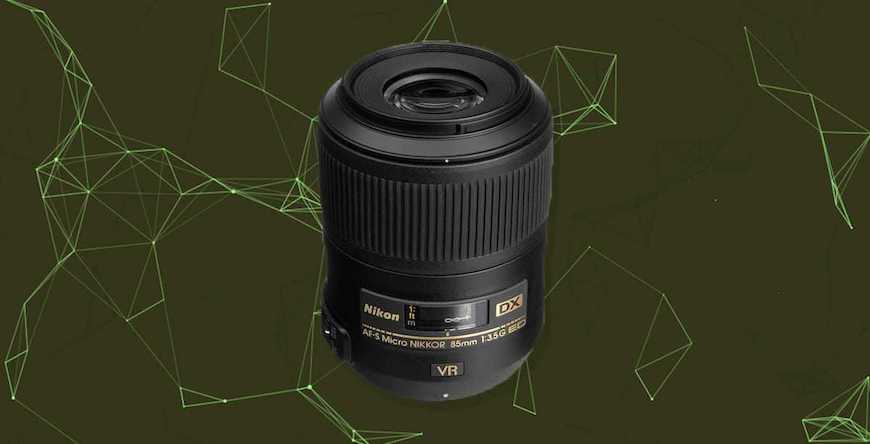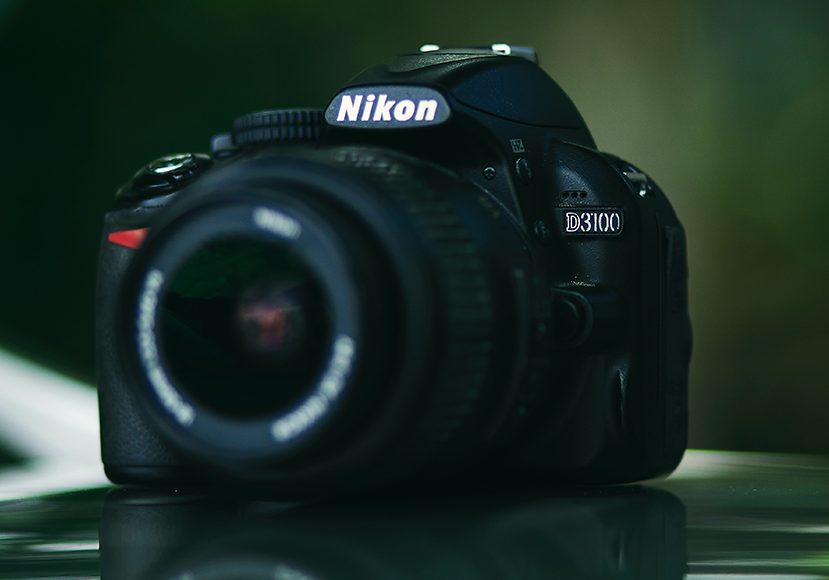
Best Lenses for Nikon D3100 in 2024
Dive into the best lens recommendations for the classic entry-level Nikon D3100 DSLR camera, ensuring sharp, vibrant photos for every photography style.
Shotkit may earn a commission on affiliate links. Learn more.
This guide to the best Nikon D3100 lenses will be useful to anyone who loves shooting with this entry-level DSLR camera.
Built around a 14.2 megapixel CMOS sensor, the D3100 was released way back in 2010.
However, that doesn’t mean it isn’t still a great Nikon camera for beginners and enthusiast photographers alike.

With its versatile zoom range and sharp imaging, this high-quality affordable lens offers an all-in-one solution for daily shooting on the D3100.
To really get the most out of the Nikon D3100, you need to attach a great camera lens to it.
Whether that’s a telephoto lens, a zoom lens, a prime lens, or even a macro lens, getting the choice of ‘glass’ right is important.
Let’s take a closer look at the camera lens recommendations for the Nikon D3100.
What are the Best Nikon D3100 Lenses in 2024?
Nikon AF-S DX 18-105mm f/3.5-5.6 G | Best Everyday Lens for Nikon D3100

- Good build quality
- Versatile focal range
- Image stabilisation
- Sharp images
- Not the fastest lens
The Nikon AF-S DX 18-105mm f/3.5-5.6G is a workhorse of a lens, with the kind of versatile focal range that makes it both one of the best Nikon D3100 lenses and one that’s suitable for everyday use.
At the bottom end, you get a focal length that’s wide enough to shoot landscapes and architecture, and at the top, you have one that’s perfect for portraits or just zooming in on details.
Image quality is great, with sharp pictures produced to the edges of the frame.
Although the variable aperture is nothing to write home about, it’s still pretty decent, given the focal range, and you should be able to shoot in low light with very little problem.
Plus, the lens has in-built image stabilisation to help you get blur-free images.
The lens is well-built, with a robust feel to it. Its autofocus is quick, accurate, and quiet.
If you’ll be working in low light conditions a lot and you’re OK with having less reach, the Sigma 17-50mm f/2.8 EX DC OS HSM is another excellent everyday shooting option.
But if you’re looking for an everyday prime, the Nikon AF-S DX NIKKOR 35mm f/1.8G is also an excellent choice.
Nikon AF-S FX NIKKOR 50mm f/1.8G | Best Portrait Lens for Nikon D3100

- Affordable
- Lightweight
- Compact
- Good image quality
- Fast lens
- No image stabilisation
This compact nifty fifty is a great companion if you’re a photographer who loves taking portraits.
With its wide, fast aperture of f/1.8, you get both great low-light performance and lovely background blur, which will really help you isolate your subject.
Of course, given that it’s a 50mm, another reason it’s great for portraits is that the perspective it offers is quite similar to that of the human eye, making compositions feel natural.
It doesn’t have image stabilisation, but thanks to its lightweight design, plus that wide aperture and the ability it gives you to use fast shutter speeds, that shouldn’t be an issue.
Image quality is good overall, too, sharp and with good contrast.
If you’re looking for a lens that will give you a touch more compression, you could also try the Nikon AF-S 85mm f/1.8 G.
Sigma 10-20mm f/3.5 | Best Landscape Lens for Nikon D3100

- Robust build quality
- Fixed aperture
- Good feel in use
- Fast and accurate autofocus
- Quite heavy
- No image stabilisation
The Sigma 10-20mm f/3.5 is a great landscape lens for the Nikon D3100, thanks to its ultra-wide perspective. Architectural photographers, too, will be happy with what it offers.
One great feature of this lens is that it comes with a fixed aperture of f/3.5 throughout the focal length. This means that its performance is consistent, whatever the light conditions, and in terms of depth of field, so you can focus more on composition than worrying about aperture settings.
It’s a relatively bulky lens, as wide angles often are, but its weight is distributed well, it doesn’t feel top-heavy, and that gives it a robust quality.
In use, both its zoom ring and focus ring turn smoothly, and the autofocus is generally great, although it’s not that quiet, so if you shoot video using AF you’ll need an external mic.
Image quality is good too, but mainly in the centre of the image. Unfortunately, this lens suffers from what many wide-angle lenses suffer from, which is soft edges.
Nikon AF-P DX 18-55mm f/3.5-5.6G | Best Beginner Lens for Nikon D3100
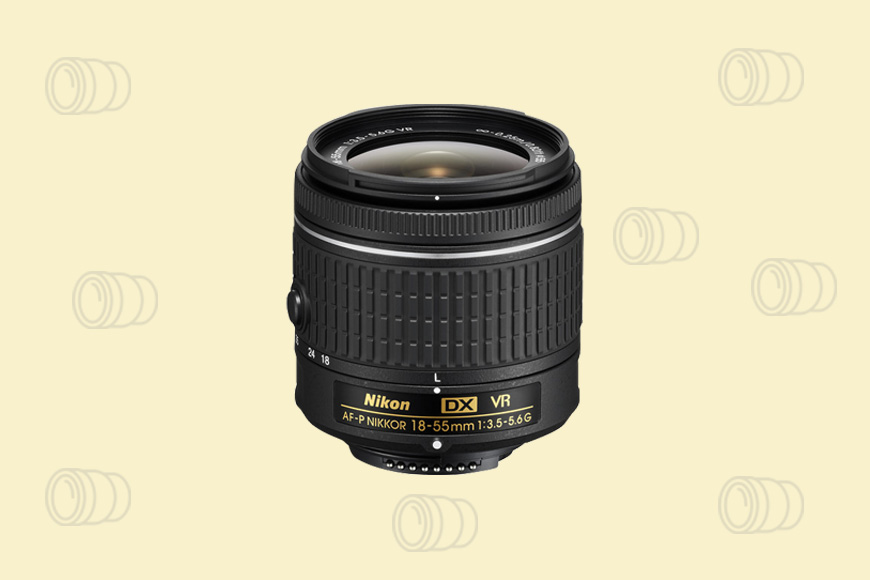
- Lightweight and portable zoom lens
- Versatile focal range
- Affordable
- Good autofocus
- Variable aperture
- Images soft at wide apertures
This is our pick as the best beginner lens for the Nikon D3100, and it’s often supplied as a kit lens for that reason.
It’s a zoom lens that is easy to use, affordable, and versatile. A good beginner lens should have a focal length that can cover a wide range of photographic subjects and situations, such as landscapes, portraits, and events, and this does that with no sweat.
It should also have a good optical performance, a fast and reliable autofocus system, and a durable and compact design.
This lens fulfills all of those criteria.
It’s also lightweight and portable, which is a great bonus for beginners, especially if they’re getting used to an interchangeable lens system.
A great addition (and by no means standard) to a beginner lens is image stabilisation, and this zoom lens has that too. A great help for shooting handheld and in tricky light conditions.
However, with regards to the IS, you should note that you can’t turn that on and off on the lens. It has to be done through your camera.
Its autofocus capabilities are very good, and the images it produces, while suffering from a little softness at f/3.5, become much sharper at higher apertures.
For beginners who aren’t into the zoom lenses so much and are instead looking for a great prime lens, the best prime beginner lens is the Nikon AF-S DX NIKKOR 35mm f/1.8G.
Nikon AF-S DX Micro 85mm f/3.5G | Best Macro Lens for Nikon D3100
- Sharp images
- In-built image stabilisation
- Good build quality
- Good autofocus
- None
A specialist lens with a 1:1 magnification ratio, the Nikon AF-S DX Micro 85mm f/3.5G, is the lens Nikon D3100 shooters need to get up close and personal with tiny things, details and textures.
Although its aperture of f/3.5 means it’s not the fastest lens, it still gives users a lot of control over depth of field. Sometimes even if you have a wider aperture macro lens, you might not use it fully open, as it can make the area of focus so narrow that it looks unnatural.
So, f.3.5, especially coupled with this lens’s focal length, isolates the subject from its background nicely.
The lens has in-built image stabilisation, which is essential for macro photography.
Even though you’ll be shooting most of the time on a tripod, when you’re photographing at such magnifications, even tiny movements can create camera shake and mess up your image.
Having image stabilisation, too, means you also might be able, in some situations, shoot handheld for more flexibility.
The image quality is great, nice and sharp, and with good colours and contrast.
Any shooters looking for a less expensive option could lose some of that focal length and go for the Nikon AF-S DX Micro-NIKKOR 40mm f/2.8G.
Sigma 150-600mm 5-6.3 | Best Lens for Nikon D3100 for Wildlife
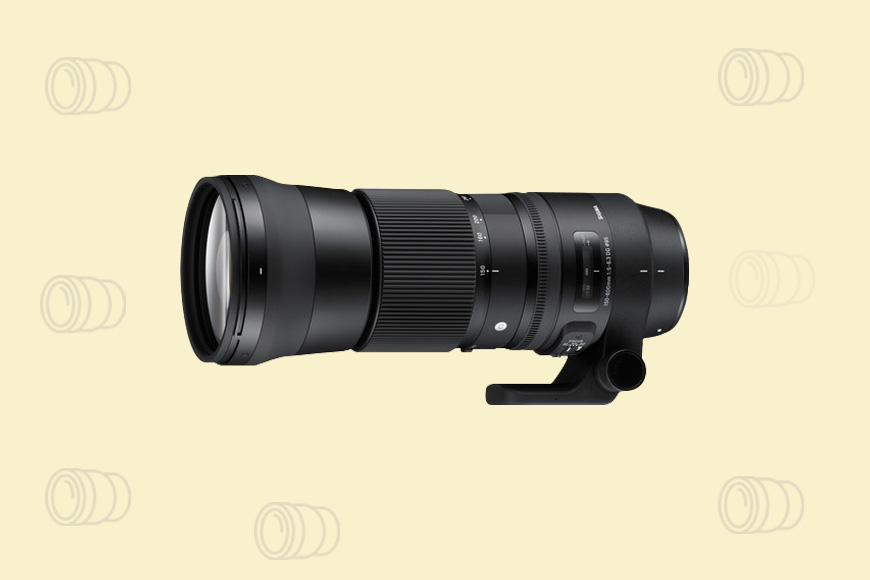
- Excellent focal range
- Image stabilisation
- Well-balanced telephoto lens
- Robust build
- Not the fastest telephoto lens
This telephoto lens, obviously, has an incredible reach. If you want to shoot wildlife with your Nikon D3100, this is the lens you’ll need in your kit bag.
Despite its size, it’s a very manageable lens and handles well. It’s robust, well-balanced, and is comfortable in the hand. It’s also weather-sealed, which is handy for those long wildlife shoots that can take place in any kind of weather.
The Sigma 150-600mm f/5-6.3 also has built-in image stabilisation. That’s a deal-breaker for lenses with this kind of focal range.
Even though there’s a good chance you’ll be using a tripod when shooting wildlife, you need as much help as possible.
Wildlife can move fast, and even small gusts of wind or micro-adjustments you make to your hand position can cause the camera to shake. And, you need to be able to shoot handheld, too, if the situation requires it.
Autofocus is lightning-fast, reliable, and also quiet. The image quality this telephoto lens offers is consistent throughout the focal range and apertures, remaining sharp and well-contrasted.
For wildlife shooters wanting better lowlight performance and who don’t mind sacrificing some reach, you could bump up to the faster Sigma 70-200mmF/2.8.
Sigma 70-200mmF/2.8 | Best Lens for Nikon D3100 for Sports
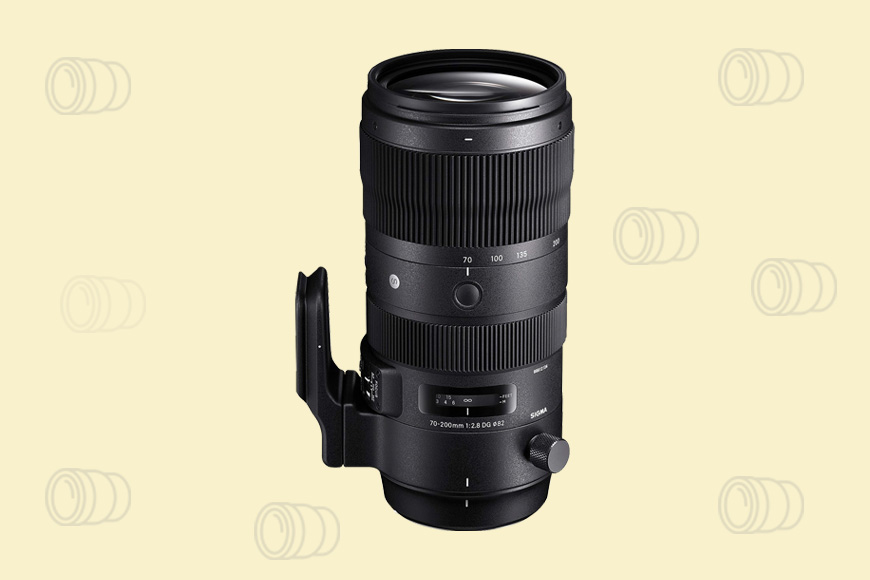
- Versatile focal length
- Wide, fixed aperture
- Excellent image quality
- Well-designed
- Expensive
- Quite heavy
The Sigma 70-200mm f/2.8 (full-frame equivalent of a 105-300mm) is a pro-level piece of zoom lens glass that is particularly good for photographers wanting to shoot sports action.
The combination of a fast, fixed aperture and an extremely versatile focal length means that there’s very little a sports photographer wouldn’t be able to capture, no matter the speed or the light conditions.
Thanks to that wide aperture and the lens’ ability to compress the scene, you can also isolate subjects or action well and achieve a nice background blur.
Its performance is outstanding. The lens has excellent autofocus capabilities, and it works quickly and accurately.
The images it produces, too, are of a high quality. They are sharp across the full range and from edge to edge and display good colours and contrast.
If you’re looking for a less expensive option that also has more reach, you could consider the Sigma 150-600mm 5-6.3.
What Lenses are Compatible with the Nikon D3100?
The Nikon D3100 is a DX-format DSLR camera, and its lens compatibility is primarily determined by the F-mount and the presence (or absence) of an autofocus motor in the camera body.
The D3100 does not have an in-built autofocus motor, which means it relies on lenses with integrated motors for autofocus functionality.
Here’s a Nikon D3100 lens compatibility chart to illustrate the compatibility of camera lenses with the body.
| Lens Type | Compatible with Nikon D3100? | Features | Examples |
|---|---|---|---|
| AF-S Lenses | Yes | These lenses have built-in autofocus motors. | AF-S DX Nikkor 18-55mm f/3.5-5.6G VR, AF-S DX Nikkor 35mm f/1.8G, etc. |
| AF-P Lenses | Partial | Newer series with pulse motor for faster autofocus. Requires firmware update. | AF-P DX Nikkor 18-55mm f/3.5-5.6G VR |
| AF (and AF-D) Lenses | Yes, but with limitations | Will mount but won’t autofocus. Manual focus required. | AF Nikkor 50mm f/1.8D, AF Nikkor 70-300mm f/4-5.6D ED, etc. |
| AI and AI-S Lenses | Yes, but with limitations | Older manual focus lenses. Will mount and meter, but with manual focus. | Nikkor 50mm f/1.2 AI-S, Nikkor 105mm f/2.5 AI, etc. |
| E-type Lenses | No | Electronic aperture lenses. Won’t function properly. | — |
| Non-CPU Lenses | Partially | Will mount, but without metering. Manual mode recommended. | — |
| DX vs. FX Lenses | Varies | DX for crop-sensor. FX for full-frame but will use the center portion on D3100. | DX Lenses, FX Lenses |
Is it Worth it to Buy a Nikon D3100 in 2024?
This is a good question, especially given that the Nikon D3100 was released in 2010.
Back then, it was a popular, entry-level DSLR. But in the last thirteen years, there have been many advances in camera technology, so it would be reasonable to assume that this camera might no longer cut it.
However, that assumption doesn’t necessarily hold true.
At the time of its release, the Nikon D3100 was ahead of its field.
It had a compact, lightweight body and a beginner-friendly interface. It housed a high-quality, 14.2-megapixel CMOS sensor, which no other company was doing.
It had an 11-point autofocus system, which was also impressive at the time, and it was a good low-light performer, with an ISO range from 100 to 12800.
The D3100 could shoot at 3 frames per second in burst mode. That’s nothing special these days, but it wasn’t too bad for a camera targeted at beginners in 2010.
But, what was impressive then, in terms of its shooting speed and low-light performance, is no longer so impressive.
There have been huge advances in both these areas of technology, so people wanting to use the Nikon D3100 for low light or sports photography will find it lacking.
But that 14.2-megapixel CMOS sensor is still as impressive as it was, and if you combine it with a good lens, you can still produce some stunning images.
The Nikon D3100 sensor’s ability to render colour and show fine details means it still punches above its weight in this sense, especially if you are shooting in well-lit conditions or somewhere you can control the light, such as a studio.
The Nikon D3100 was one of the first Nikon DSLRs to offer users the ability to record video. Again, this was impressive at the time.
It could shoot 1080p Full HD video at up to 24 frames per second. But, nowadays, that’s not enough. Modern content creators are looking for higher frame rates and higher resolution than Full-HD. 4K video is often available on more recent entry-level hybrid cameras.
Another area in which the Nikon D3100 is lacking is in terms of connectivity. Wi-Fi and Bluetooth weren’t common DSLR features in 2010, so today’s shooters might find that an irritation, especially when they want to share their creations quickly.
It also doesn’t have a touchscreen or a swivel screen, something that most entry-level cameras have these days. This means the Nikon D3100 is still fine for the purist but not so much for those who want the kind of flexibility these features provide.
The Nikon D3100 uses the F-mount, which means it’s compatible with a wide range of Nikon lenses; primes, telephoto, wide-angle, and zoom lenses. However, you should note that not all newer Nikon lenses may be fully compatible with the D3100. Some features, like autofocus, may not work on it.
As well as giving you access to a great range of lenses, one of the best things about the Nikon D3100, which still holds true today, is its price.
Then, as now, the Nikon D31000 is very affordable and great value for money. You can also pick up used bodies (sometimes with lenses too) second-hand. This is a great option for people just starting out who want to learn the ropes of photography and use interchangeable lenses on a budget.
As it stands, despite the camera’s shortcomings, I still think it has stood up well over time.
Its interface was designed with beginners in mind, so it’s a great tool for beginners to learn the basics of photography without breaking the bank.
And, with the amount of high-quality lenses out there that you can use with it, coupled with that excellent sensor, you’ll have no problem creating outstanding images.
As the saying goes: it’s not the camera; it’s what you do with it.

With its versatile zoom range and sharp imaging, this high-quality affordable lens offers an all-in-one solution for daily shooting on the D3100.





